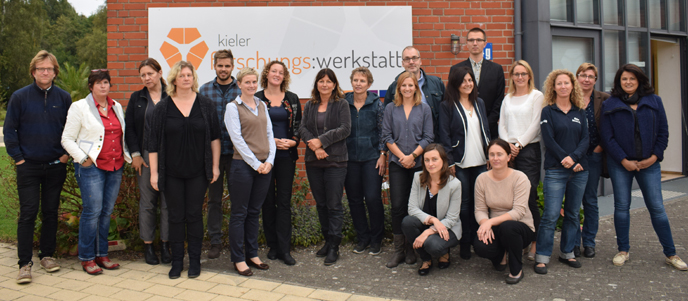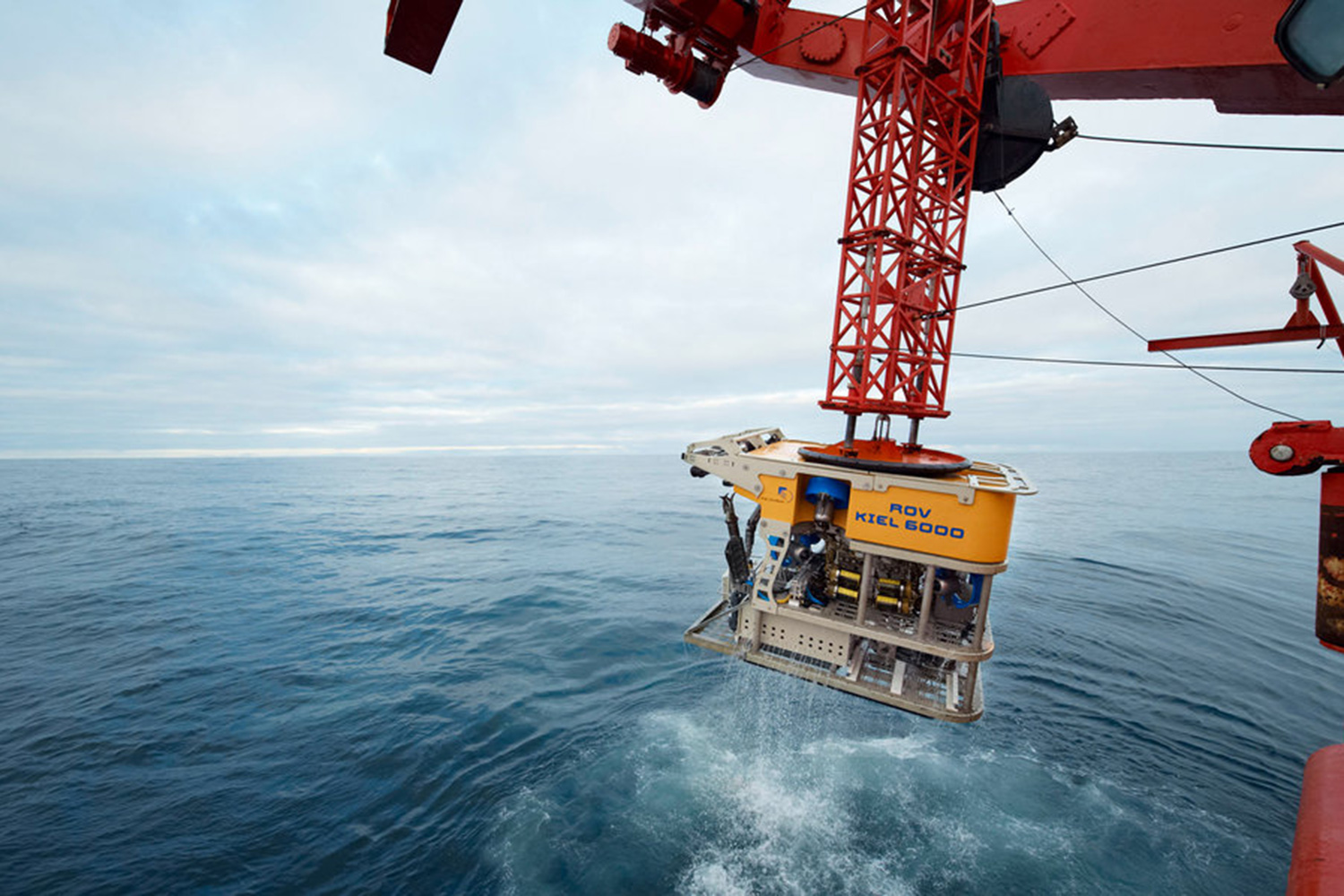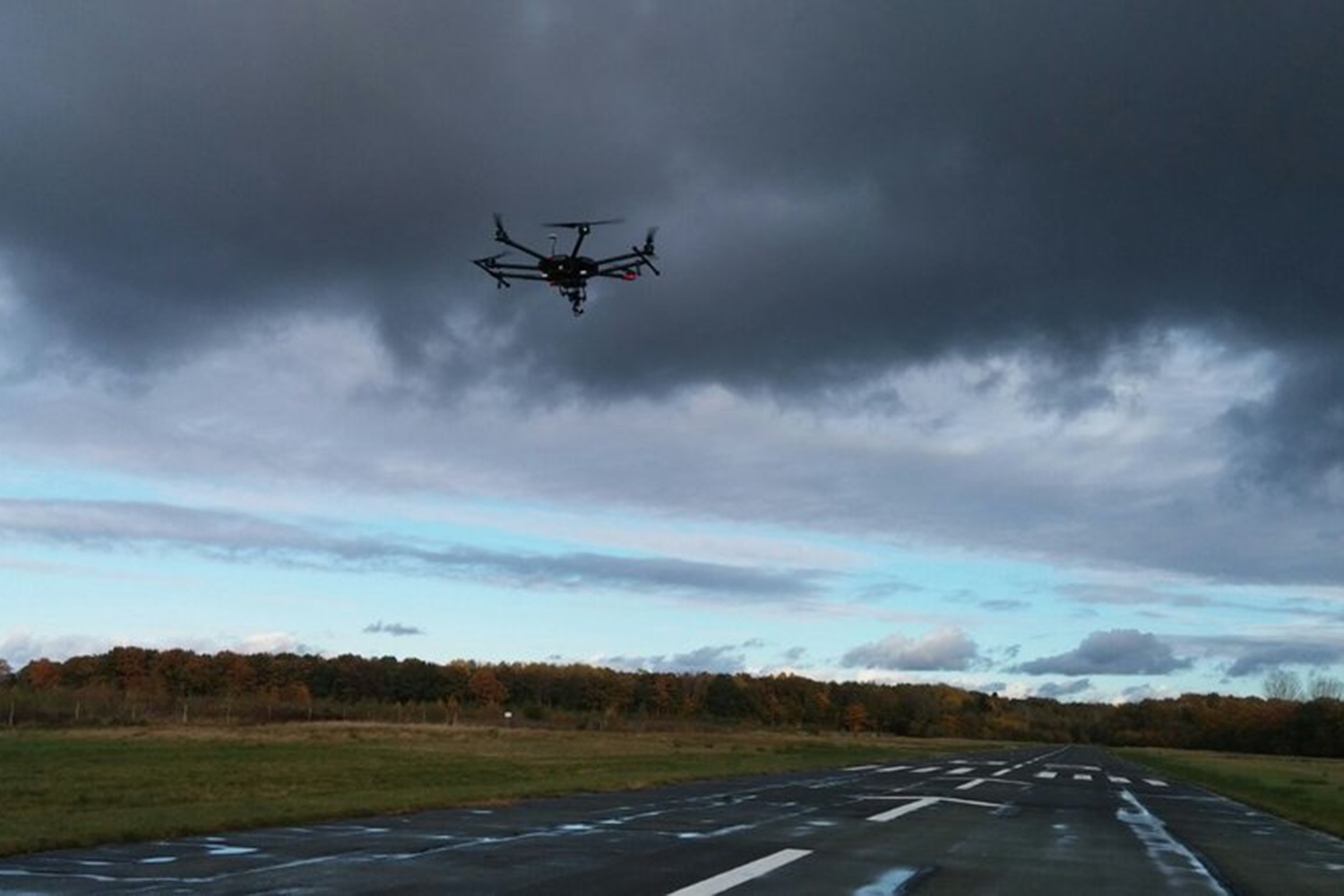Arctic sea ice seems to be hostile to life, but it is home to a wide variety of microorganisms such as algae and bacteria. To withstand these extreme conditions these organisms adopt smart survival strategies, for example by releasing a protective layer of extracellular polymers that includes carbohydrates and proteins. They live protected in this polymeric matrix. As soon as the ice melts, these compounds released by microorganisms end up in the pools of melt water and form a gelatinous biofilm on the surface. For the first time researchers from GEOMAR have studied these compounds in meltwater ponds that may represent a potential source for atmospheric aerosols of the high Arctic. Aerosols play an important role for climate relevant processes. For example, they serve as condensation nuclei around which water condenses and clouds form. Their concentration influences the amount of radiation absorbed by the earth. “Our study shows that sea ice melting may be a source for biopolymers in the sea surface microlayer. Emitted to the atmosphere, these compounds may have a great impact on the formation of clouds“, says Prof. Anja Engel. She is the senior scientist of the study published today in the international journal Scientific Reports.
Clouds coverage and aerosol concentration in the atmosphere have an influence on the melting and freezing of ice. In 2012, Arctic sea ice experienced its minimum extension with 3.41 million square km on 16 September. That same year the joint IceArc expedition of AWI and GEOMAR on board of RV Polarstern set sail for recording the changes happen-ing in the Central Arctic Ocean. “Changes in the Arctic Ocean are visible year after year; the summer traveller reaching the Central Arctic Ocean assists to a myriad of small and big, shallow and deep holes in the progressively thinning ice. These holes are called melt ponds and are effectively new environments for any form of life within the ice. During our cruise we sampled these melt ponds as well as open water at the ice edge or among the ice floes” , says Dr. Luisa Galgani , first author of the study.
The air-sea interface is a thin, gelatinous layer enriched in organic polymers and called sea surface microlayer. This layer is important as it provides a direct link between the ocean and the atmosphere. Organic compounds accumulating in this interface may repre-sent a substantial reservoir for the formation of primary organic aerosols (POA). In the high Arctic, cloud cover and aerosols influence the capacity of sea ice to reflect or absorb solar radiation, therefore influencing ice melting or freezing.
Scientists found that proteinaceous polymers smaller than one micrometer represent the most abundant compounds in the sea surface microlayer of Arctic melt water. By water movement, wind shear and the formation of small droplets these small compounds enter the air. Particles in this size range can accumulate in the atmosphere for several days to weeks because their removal mechanisms are least efficient. During this period they can be transported to a long distance from their sources. As particles of this size are the most persistent, they largely contribute to the atmospheric aerosol mass.
Future changes in the Arctic Ocean and on its biology, driven by global warming, will likely influence the concentration of organic compounds at the air-sea interface, determining the aerosol mass composition over the region and beyond. The transition from multi-year ice to young and thin first year ice that only lasts one season, as well as the increasing num-ber of melt ponds, supports the enrichment of proteinaceous material released from the melting ice.
“We are just at the beginning to explore the role of microbial processes in climate relevant interactions between the upper ocean and lower atmosphere. This is an urgent task, given that microbial processes are highly sensitive to global change”, Prof. Anja Engel resumes.
Original publication:
Galgani, L, J. Piontek, A. Engel (2016): Biopolymers form a gelatinous microlayer at the air-sea interface when Arctic sea ice melts, Scientific Reports, www.nature.com/articles/srep29465
Links:
www.solas-int.org surface ocean lower atmosphere study
Contact:
Sarah Kaehlert (GEOMAR, Communication & Media), Phone: 0431 600-1815,
presse@geomar.de
…



